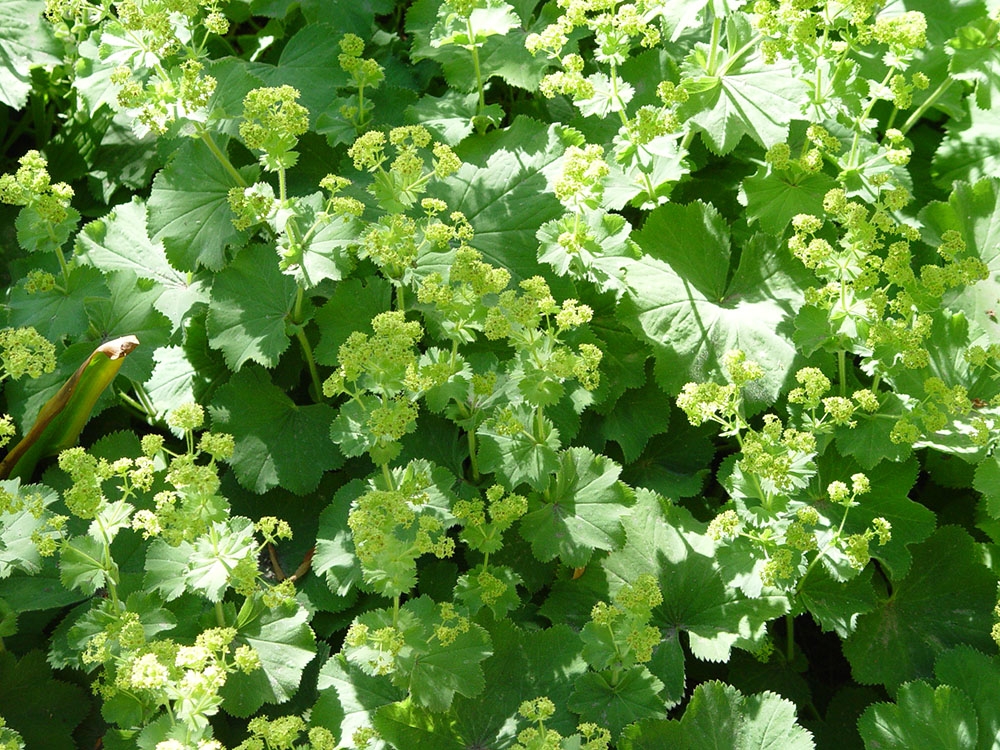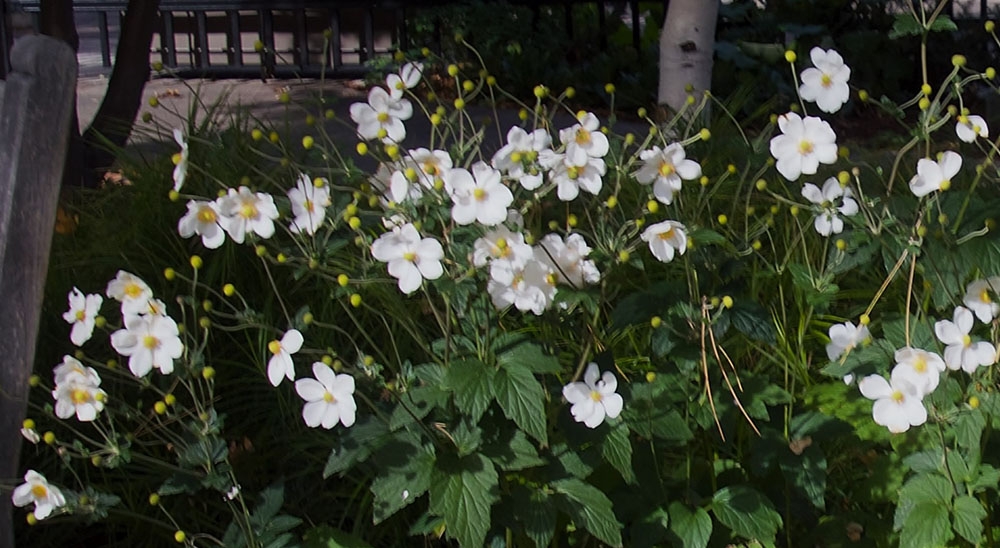Dry Shade Solutions
For many gardeners, dry shade is a difficult area to cultivate. The real trouble with dry shade is that few gardeners are aware of the many groundcovers, perennials and shrubs that excel in these conditions. Whether under a tree or shaded by structures or buildings, shady spaces can be a wonderful refuge in summer heat and a quiet place for reflection throughout the seasons. Let’s review some of my favorite dry shade plants from smallest to largest!
Groundcover
Sweet Woodruff, Galium odoratum
Commonly known as sweet woodruff, Galium odoratum lives up to its name with small, fragrant, four-petaled white flowers that come on in early spring (April and May). This mat-forming perennial spreads by creeping roots and self-seeding, creating a dense semi-evergreen groundcover in part to full shade. When crushed, cut or dried, the foliage emits a strong aroma and can be used to make sachets or potpourris.
Perennials
Coral Bells, Heuchera (many cultivars)
Coral bells are a beautiful addition to any shade garden – they provide colorful foliage that persists spring through fall. While they produce flowers in May to June, the wow factor of this plant are its leaves. Many cultivars are available, ranging from chartreuse, variegated, orange, burgundy, red, purple and deep chocolate in color. This is a must have low-maintenance perennial for every shade garden.
Lady’s Mantle, Alchemilla mollis
Lady’s mantle, or Alchemilla mollis, is a rabbit and deer tolerant perennial for dry shade that provides yellow to chartreuse flowers mid-summer among soft, fuzzy, bright green leaves. This plant will self-sow, so removing flowers before it goes to seed will prevent spread and may encourage a rebloom. Similar to the coral bells, this plant is low maintenance, requiring only that it is cut back to ground in spring.
Siberian Bugloss, Brunnera macrophylla
Also known as false forget-me-not, Brunnera macrophylla is a large-leaved clumping perennial that is topped with many small blue forget-me-not like flowers in early April. Alexander’s Great and Jack Frost are two commonly found cultivars – the former has exaggeratedly large leaves with a silver variegation. The latter has a mainly silver leaf. This plant will spread by rhizome and seed and is vigorous in the garden.
Lenten Rose, Helleborus orientalis
Lenten rose is a unique perennial for two reasons. Firstly, it is a true harbinger of spring with flowers emerging as early as February or March. Secondly, the Lenten rose performs all year long as it is an evergreen perennial. The leaves are thick, leathery and palmate in form with serrated edges. Helleborus are often hybridized to produce colorful and showy blooms that often accentuate the flower’s yellow stamens. Flower color range from white, pinks and deep reds. This plant is deer resistant but beware, its leaves stems and roots are toxic to humans if eaten.
Anemone, Anemone × hybrida
Anemone hybrids give height and structure to the garden, with foliage up to 2-3 feet and blooms in August and September reaching 3-4 feet tall. During the spring and summer, the dark green leaves of the anemone provide a lush backdrop to other flowering perennials. ‘Honorine Jobert’ is a cultivar with bright white flowers and yellow centers, while ‘September Charm’, another popular hybrid has pink blooms and yellow centers. Spreads by rhizome and prefers part to full shade.
Shrubs
Creeping Oregon Grape Holly, Berberis repens (Mahonia repens)
Formerly known as Mahonia, Berberis repens is a native Colorado broadleaf evergreen shrub that offers yellow flowers in spring, blue berries in summer and deep red purple fall color. Thick waxy leaves help retain moisture by reducing evapotranspiration in summer and winter. This plant requires virtually no maintenance. The leaves are somewhat prickly so be thoughtful of where it is placed in the garden.
Waxflower, Jamesia americana
Native to Colorado, the wax flower is a Plant Select® shrub that can be planted in shade and in high elevations. In the same family as the hydrangea but much more drought tolerant, the waxflower has broad green leaves, spring flowers and brilliant red fall color. Although this used to be difficult to find in the market, it is now being propagated at a fast pace and should be readily available in local nurseries this spring. Check the Plant Select website to find local sources.
This blog post and photos first appeared as an article in Life on Capitol Hill, March 2021.
Gallery









Comments
Variety
I love how you have provided a variety of dry shade options! The different colors, textures, and plant heights will definitely be a feast for the eyes!
Add new comment